I know you’re thinking this blog might be a continuation of our story about Parisian rats (read Paris Therapy Rats here) but it’s not. The rats in this blog post are far deadlier than those running around Paris. I introduced you to Duško Popov in a previous blog (read The Double Cross System here). Double agent Popov was likely the model for Ian Fleming’s fictional character, James Bond. Today, you’ll learn about the secret group set up by the British Special Operations Executive (SOE) and run by movie film and art directors. As you’ll see, the Camouflage Section might just be the model Fleming used for Q Branch.
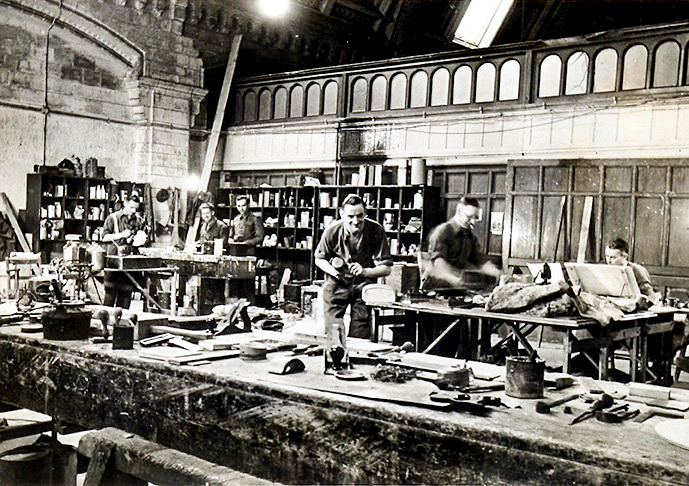
Did You Know?
Did you know that a professional baseball player was a spy? Most of us are familiar with the war efforts of players like Ted Williams but I’ll bet you don’t know the real story of Moe Berg (1902-1972), a catcher who played for the White Sox, Indians, Red Sox, and finally, the Washington Senators. He retired from baseball in 1939 after a career which saw him bat .243 as a reserve player ⏤ hardly an Allstar performance. Yet, in 1934, Moe traveled to Japan on an All-Star team which included Lou Gehrig, Babe Ruth, and Lefty Gomez. Why would they include a reserve player on a team like this? It was because Moe spoke fluent Japanese and he was a government spy. For most of the trip, he slipped away to take movies and pictures of Tokyo which were used eight years later for the preparation of the Doolittle bombing raid on Tokyo. It also marked Moe’s entrance into the world of espionage. He joined the Office of Strategic Services (OSS) in 1942 and was given covert assignments such as traveling around Europe assessing Germany’s progress in developing the atomic bomb. The purpose of one trip to Italy was to attend a lecture given by Werner Heisenberg, the German scientist in charge of the bomb development. Moe’s instructions included being given the “green light” to assassinate Heisenberg if Moe felt the Germans were close to producing a bomb. They were not and Heisenberg’s life was spared. Moe was awarded the American Medal of Freedom, but he turned it down. After his death, Moe’s sister accepted the medal on his behalf.
Special Operations Executive
The Special Operations Executive (SOE) was officially formed on 22 July 1940 when Winston Churchill ordered Hugh Dalton to “set Europe ablaze.” Churchill loved the idea of spies, espionage, and guerilla warfare. At the time, the British military leaders were against it as it represented irregular warfare tactics, but Churchill knew that undercover covert operations within the occupied countries would be necessary to accomplish the Allied goals, including the eventual invasion of Europe. Each occupied country was represented by a separate SOE department ⏤ France was represented by “F Section.” Approximately 13,000 people worked for the SOE, of which 3,200 or 25% were women. Most of the agents were people who had been driven out of their countries and could blend in easily with the locals. Although the SOE was headquartered at 64 Baker Street, hundreds of properties were requisitioned throughout England and Scotland for training its agents in hand-to-hand combat, parachuting, demolition techniques, commando tactics, and radio-related skills.
At times, the SOE was referred to as the “Baker Street Irregulars” (after its London headquarters), “Churchill’s Secret Army,” and “Ministry of Ungentlemanly Warfare.” Underground circuits or networks were set up in the countries with teams of three agents sent in for the purpose of gathering information, assisting with the escape of downed Allied airmen, and sabotage. The Gestapo was quite effective, especially in the Occupied Zone of France, with infiltrating and ultimately, destroying whole circuits (the average life span of an SOE agent was six weeks to three months). As time went on, some of the SOE agents became Nazi informants or double agents. Through the “Funkspiel” program (also known as “Englandspiel” in Holland), the Germans were able to capture SOE radios, codes, and deceive London with false transmissions.
Probably the most productive efforts contributed by the SOE came in late 1944 and early 1945 just prior to D-Day when agents were dropped into France to assist the Maquis in their efforts against the Germans (read The White Mouse here). During the months and days leading up to D-Day, the SOE and Maquis activities likely helped ensure the success of the invasion and saved countless Allied lives (the Maquis were French Resistance guerilla fighters).
The Thatched Barn
In North London, a former roadhouse known as the “Thatched Barn” was taken over by the SOE (it was a favorite haunt during the interwar period for movie actors). It was soon populated with more than three hundred movie production people, ex-prop makers, and skilled technicians/craftsmen from the film industry. The Thatched Barn became the headquarters for what became known as “The Camouflage Section” or formally, Section XV. The commanding officer was Lt. Colonel J. Elder Wills (1900-1970), a pre-war film art director (after the war, Wills became the chief art director for Hammer Films). He was responsible for overseeing the SOE operation which designed and produced explosives, disguises, false documents, and trick gadgets. The section also formed a fashion company where suits and dresses were cut to continental European styles. While the majority of work was carried out at the Thatched Barn, several sub-stations existed in and around London where highly specialized projects were undertaken.
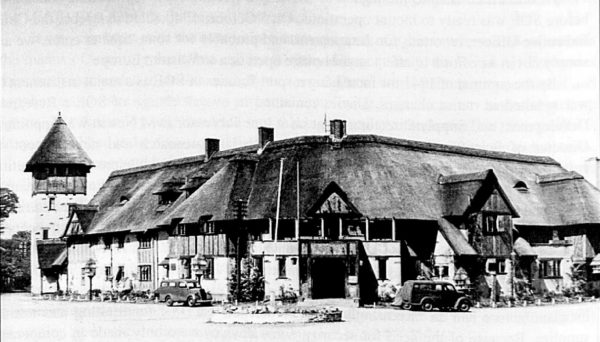
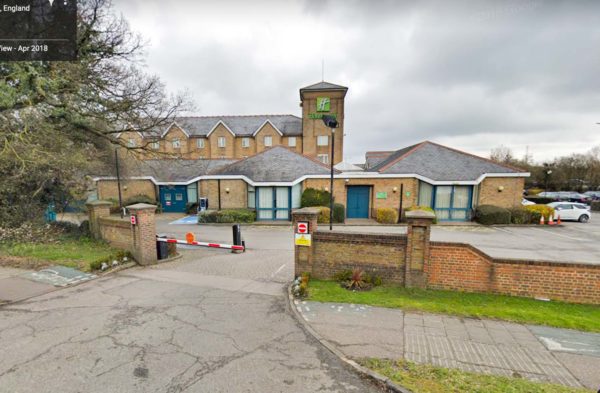
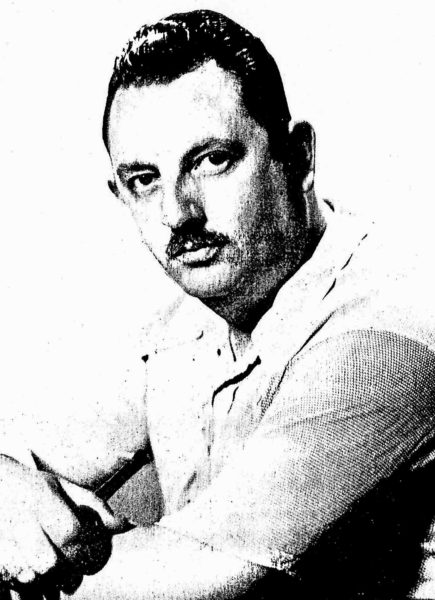
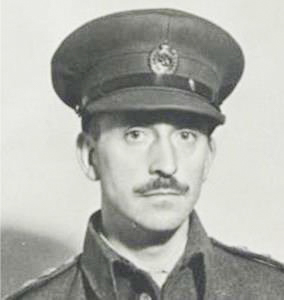
Some of the devices invented by the Camouflage Section might seem like they could have come out of Q Branch (or vice versa?). A fake hollow tree trunk was built to conceal either a radio or weapon such as a Sten gun. Carborundum was created by the SOE and when spread on train tracks, Nazi locomotives would come to an immediate stop. A submersible canoe called “Sleeping Beauty” was developed and tested in the swimming pool (remember “Little Nellie” in You Only Live Twice?). Watch the movie clip with “Little Nellie” here.

How about fake camel dung which could conceal a bomb? And then, there’s the single-shot pistol concealed in a cigarette case. Medieval devices such as the Caltrop were resurrected and improved upon. Another medieval idea was using crossbows powered by multiple rubber bands: two types were developed and called “Big Joe” and “Li’l Joe.” The SOE pioneered the use of plastic explosives and developed a wide range of applications: bicycle pumps or as fruit in tins. Renown film plasterer, Wally Bull (2001: A Space Odyssey) developed explosive fake coal which was used for sabotage. By 1944, Section XV was supplying 90,000 objects per year and had developed a catalogue from which agents could pick and choose their clothing, devices, and accessories (formally known as the Descriptive Catalogue of Special Devices and Supplies). However, Section XV’s most ingenious and deadliest weapon was a rodent.
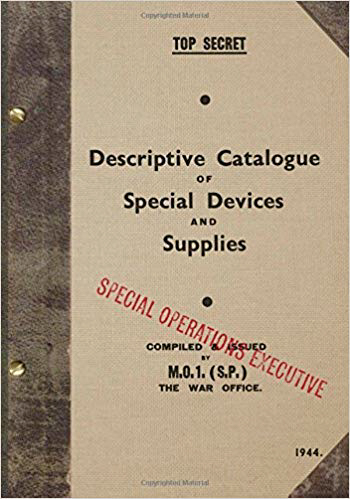

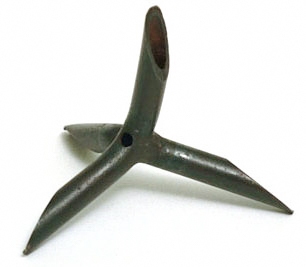
Exploding Rats
After the dead rat is skinned, a craftsman would sew up the skin, shape it to look like a dead rat and then fill it plastic explosives. A short length of safety fuse with detonator is inserted into the “rat.” The SOE agent would leave the dead rat next to a boiler. The enemy would find the rat and throw it into the boiler where the flames would ignite the explosives ⏤ mission accomplished.
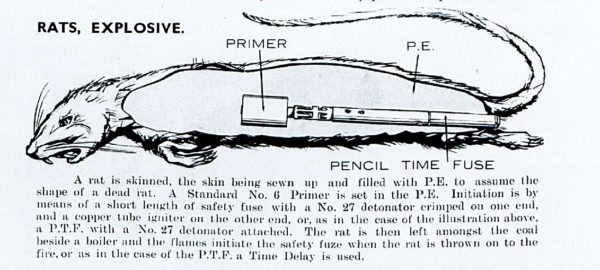
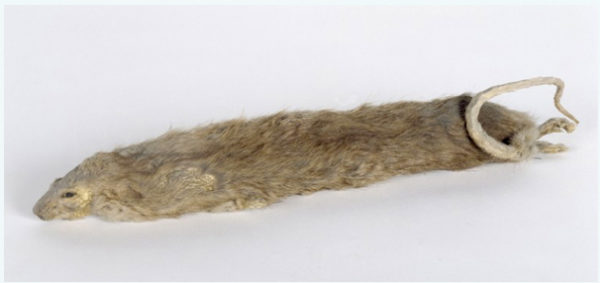
UK National Archives
SOE files are still being opened at the National Archives in Kew, outside London. These files contain information about specific agents, their missions, and Section XV. Evidence has been found that the Camouflage Section went far beyond developing humpbacks, make-up, and wigs for altering agents’ appearances. It turns out that dentists and plastic surgeons were employed to permanently alter physical appearances. Bridgework and other dental work were performed to make the agent appear more convincingly as “Continental.” SOE agents were typically recruited because they were citizens of their assigned country but once dropped in, they couldn’t afford to be recognized by friends or relatives. So, the SOE performed “permanent make-up.” In other words, plastic surgery changed their appearance.

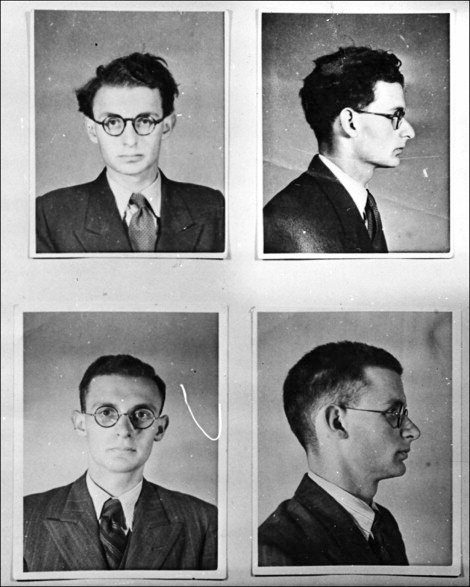
The “Pimpernel of the Maquis”
Sir James R. H. Hutchison (1893-1979) was one of the SOE officers at Baker Street assigned in 1942 to “RF Section” (the Free French section). By 1943, Hutchison decided to become a field agent at the age of fifty and left SOE headquarters for his training. His face was well known to the Gestapo in France and as such, Hutchison made the decision to have plastic surgery. He underwent the knife of Dr. Rainsford Mowlem at the London Clinic. Hutchison had the tips of his ears clipped off, reduced the size of his nose, and his chin became more prominent. Off he went to France where he worked closely with the Maquis to support the D-Day invasion. While his nom de guerre was Hastings, he became affectionately known as the “Pimpernel of the Maquis.” Hutchison survived the war and went on to write a book which included his experience with wartime plastic surgery. Seventy-years later, declassified SOE documents confirm both the dental as well as plastic surgery operations.
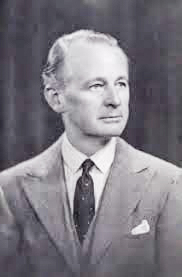
In closing, it is not surprising that there are some similarities between Section XV and the fictional Q Branch. One of SOE’s training instructors was a former film critic, Paul Dehn (1912-1976). During the 1960s, Dehn became a script writer and focused on espionage stories. He wrote the script for what is considered to be the best James Bond movie, Goldfinger. Watch a clip with “Q” and James Bond here.
✭ ✭ ✭ Learn More About the Camouflage Section ✭ ✭ ✭
Foot, M.R.D. SOE in France. London: Whitehall History Publishing, 1966.
Hutchison, James. That Drug Danger. Montrose: Standard Press, 1977.
Milton, Giles. Churchill’s Ministry of Ungentlemanly Warfare. New York: Picador, 2016.
There are many books on the SOE; some with a general overview and some with a specific subject in which the SOE envelopes itself around the story. I specifically chose several books for a reason. Foot’s exhaustive book was commissioned by the British government to chronicle the history of the SOE. It was a time when wartime documentation was classified but many of the surviving participants were still alive and could be interviewed. Besides classified information, another roadblock Foot may have encountered was that these people could not talk about certain facts because they had signed an oath under the British “Official Secrets Act.” Despite this, memories might have been clouded by the passage of time or perhaps, certain personal prejudices may have altered certain facts.
Milton’s book, on the other hand, represents a “new” generation of books which benefit from key documents becoming declassified over the past five years.
What’s New With Sandy and Stew?
We love hearing from everyone who either reads the blogs or books. Occasionally, we’ll hear from someone who has subscribed to the bi-weekly blog but for some reason, it doesn’t come through. We’ve found that sometimes the subscription isn’t confirmed by the user and as such, won’t get sent out.
If you’re having problems getting the blogs, by all means, please contact us. Sandy handles this end and she will investigate. Sometimes, it means we just have to input your e-mail address at this end (with your permission of course).
Contact: sandy.ross@yooperpublications.com
Someone Is Commenting On Our Blogs
Thank you to Mr. Strachan for letting us know he enjoyed our blog The French P.T. Barnum (read here). He found an old book about Ferdinand de Lesseps (1805-1894) which had a picture of M. de Lesseps, his second wife and nine of what would become a family with twelve children (one child would not outlive M. de Lesseps). A widower, M. de Lesseps married Louis-Hélène Autard de Bragard (1848-1909). The original caption mentions that M. de Lesseps was widowed at the age of sixty-eight, however, that seems unlikely as records show he married his second wife in 1869 when he would have been sixty-four. I found the image displayed here and it’s likely this is the one Mr. Strachan was referencing in his e-mail to us. Hope you can go back and read our blog on Ferdinand de Lesseps, the French P.T. Barnum.
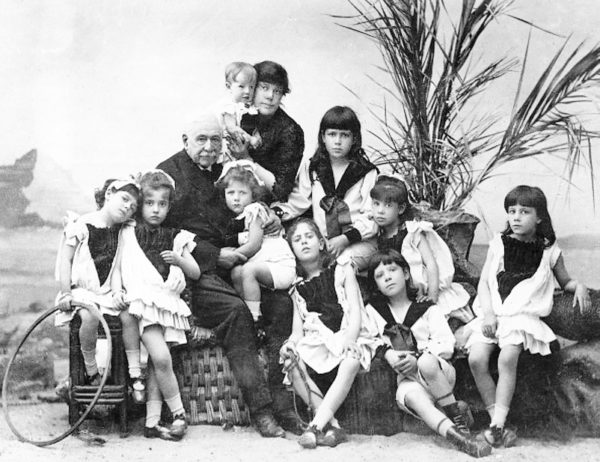
If there is a topic you’d like to see a blog written about, please don’t hesitate to contact me. I love hearing from you so keep those comments coming.
Why Would You Want To Buy Our “Walks Through History” Books?
Simple.
You like to travel and experience history and historical events. You like to see original buildings that had a significant impact on the people and events of the history you’re engaged with. You want to know the stories behind the brick and mortar in front of you.
The walking tour books are meticulously researched so you can go directly to those sites and learn about the building’s history as well as an introduction to some of the more interesting people associated with it.
We Need Your Help
Please tell your friends about our blog site and encourage them to visit and subscribe. Sandy and I are trying to increase our audience and we need your help through your friends and social media followers.
Thank You
Sandy and I appreciate you visiting with us. We have some exciting things on the horizon and we’ll keep you updated as we go along.
Share This:
Follow Stew:
Find Stew’s books on Amazon and iBooks.
Please note that we do not and will not take compensation from individuals or companies mentioned or promoted in the blogs.
Copyright ©2019 Stew Ross



Fascinating information! I knew about the double (or triple) life of Moe Berg, but I did not know about all the British officers involved in espionage!
Thanks Jane. Hope you’re having a wonderful time in Paris and I’m looking forward to catching up once you return to the States. STEW